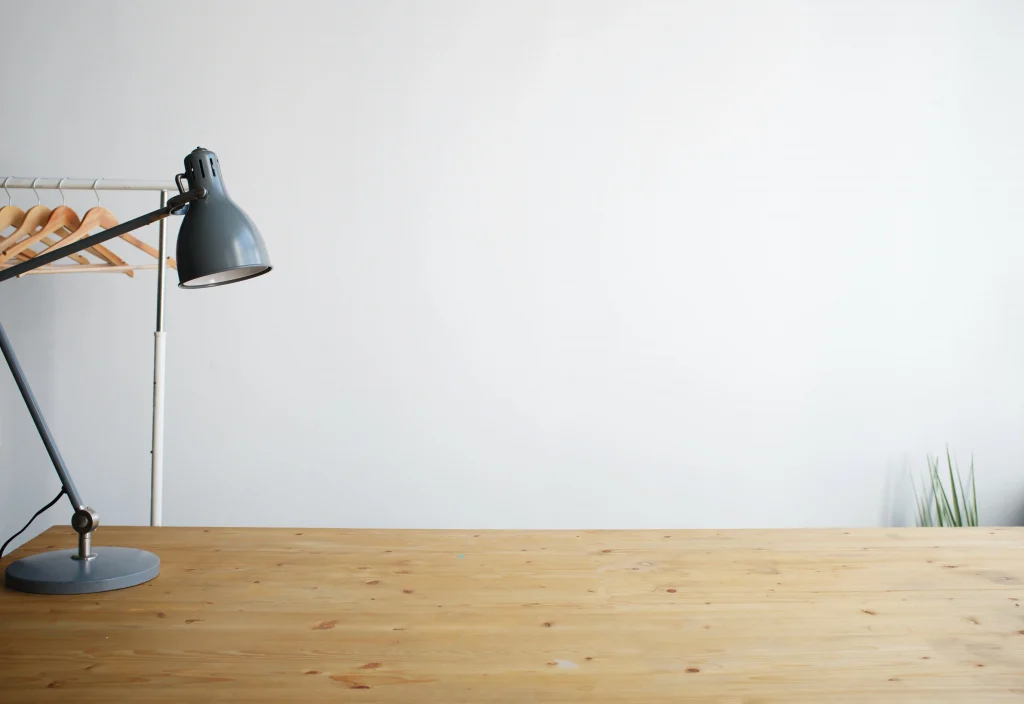People are migrating away from the notion of a “study/writing desk” to a “computer desk” nowadays since they spend more time on computers than on books. It’s a piece of furniture that receives the most use in your house, whether you’re working from home, doing paperwork, gaming, or simply surfing the Internet.
Your desk should be able to support a reasonable amount of weight while still fitting in with the rest of your home office. We’ve considered all the important factors, including technical performance, aesthetics, and use.
We hope you’ll discover your favorite timber species below, whether you’re on a budget or seeking to make a genuinely stylish desk. What distinguishes wood from other materials such as glass, metal, or laminate? That is an excellent question.
The natural look of wooden furniture, on the other hand, is unrivaled. It’s a classic material for a reason: it looks great, feels great, and performs well. It is almost certain that it will never go out of style. Natural surfaces like wood have even been shown to improve our mental condition, lower blood pressure, and reduce stress levels.
This is due to our inherent affinity to natural surfaces and materials such as wood. If you’re at work or attempting to get some nagging paperwork out of the way, this stress-relieving impact can only be a good thing!
Oak
Ash wood or Oak. Did you know that the White House’s Oval Office desk is made of oak? If it’s good enough for the President of the United States, it may be good enough for you! You can’t go wrong with oak. It’s a timeless classic for a variety of reasons.
For starters, wood is a tough and long-lasting material. This is critical for a piece of furniture that will support the weight of your workplace equipment. Two, it’s stunning. American White Oak sapwood is a lovely delicate cream color, but European Oak sapwood is a beautiful golden to medium brown color.
Oak may also be stained to match a variety of home office styles because of its outstanding finishing capabilities. Finally, oak is quite durable, taking screws, nails, and cutting just as well as any other wood with a good wood stain — which is obviously important if you’re doing some DIY with it!
Oak is in the center of the price range. However, there are also some cons of oakwood. There are less expensive choices as well as more pricey timbers. You can’t go wrong with oak because of its dependability and beauty. Certainly a classy choice.
African Hardwoods
Are you looking to push the boat out a little further? Take a look at some of these trendy, beautiful timbers, one-of-a-kind African hardwoods like utile, bamboo iroko, Sapele, cedar, or Zebrano, which gets its name from its distinctive, stripy appearance and perfect wood!
There’s an enormous range of fascinating colors, grains, and textures to choose from, allowing you to build a unique office desk. Let’s take the word useful as an example. It’s regarded by many to be the best mahogany imitation out there because of its reddish-brown and purple tones.
Useful is extremely durable because of its slow growth rate, which is typical of most African wood species. The species is very useful since it has good adhesive qualities, as well as good machining and fixing properties.
Walnut
Walnut is well-known for its beautiful texture, color, unique look, and pattern. The creamy brown to chocolate brown colors of species like American Black Walnut might work well in a darker, more modern home office setting.
The remarkable ornamental beauty of the hardwood is combined with excellent performance capabilities, ensuring that your desk will be able to resist a lot of use for a long time.
Something to keep in mind: walnut’s large, baroque look and scarcity make it a high-priced item. If you are looking for a designer desk, Walnut is the wood for you. Beautiful wood with proper maintenance, the perfect combination.
Cherry
Take a look at species like American Cherry if you want to make a statement. Cherry may be seen in a variety of office settings, thanks to its fine texture and white to reddish-brown sapwood, which is sometimes creamy pink.
Cherry is a woodworker’s dream as well. It provides outstanding gluing, nailing, screwing, and polishing qualities, as well as great hand and machine tool workability. The straight grain, fine, homogeneous sanity, and smooth texture will win you over right away.
Another distinguishing feature is the mild natural shine. It’s also worth noting that cherry wood is extremely hardy and resistant to rust and decay. A very tough wood type with great strength, The heart is especially resistant to decay.
Cherry wood is also fairly robust and has a medium shock resistance. Cherry wood is one of the easiest woods to deal with, so it’s a great choice for beginning woodworkers. It is simple to use and does not necessitate the use of special tools. Furthermore, cherry wood is good for gluing, nailing, bolting, and polishing.
Maple
When it comes to the best types of wood for wooden desks, Maple is at the top. American Hard Maple is a good choice for a desk if you’re on a budget. It has a winning combination of properties: it’s both durable and attractive.
The wood’s milky white sapwood and subtle pinkish-brown hue make it a more appealing, contemporary, and less expensive option. Maple, on the other hand, maybe a little tricky to deal with and requires extra caution while milling.
One of the top timbers for own work desks. There are also cheaper options if you are on a budget.
Birch
Birch is a kind of natural hardwood that grows mostly in North America. It also comes in a variety of species, with white birch, yellow birch, and black birch being the most frequent.
Yellow birch and white birch are two of the most popular trees with gorgeous grain and dark color. When someone just says “birch,” they’re usually referring to the yellow birch, also known as the golden birch which tends to give this modern look.
Birch is a popular wood for woodworking projects. It’s used in toy pieces, toothpicks, and paper, in addition to computer desktops and tables.
Sold birch furniture, on the other hand, is difficult to come by. The strength and durability of birch are two qualities we admire. Although Teak is not the toughest wood, with proper care and maintenance, it may survive for decades.
Furthermore, it received a Janka score of 1,260, making it a great pick for desktop creation. It’s also a lovely wood to look at. It has a distinct appearance because of the fine strain with waves and holes, as well as the straight grain.
Birch wood structures have a closed pore structure that allows for good staining and finishing, resulting in a beautiful and consistent surface. It also has good machining properties, allowing for smooth sanding. Most importantly, birch is less costly than other hardwoods.
Rosewood
Rosewood is another great solid wood choice for woodworkers looking for the best desktop wood. The timber comes from the leguminous Dalbergia plant, which is called after the pungent, sour taste of chopped rosewood. It is often produced in south Asia.
Natural beauty and durability are two significant benefits of rosewood for computer desks. Rosewood items are also appealing and striking because to the dark and bright red tones. Rosewood surfaces are very lovely and weather-resistant due to their oily nature and clear, diverse texture. However, there are a few things you should know about rosewood.
For one thing, the rosewood species’ heartwood and sapwood differ differently. The sapwood is yellowish-brown, whereas the heartwood is orange, red, purple, or dark brown. Furthermore, rosewood is rather weighty with incredible durability and if designed properly, it gives you much storage.
As a result, however, moving your rosewood desks, tables, and other furniture may be difficult. Rosewood also has a tendency for deforming much too soon for our tastes although it has incredible water resistance.
This is due to the high moisture level, according to woodworking specialists. As a result, it’s recommended to keep and utilize rosewood desks indoors, as direct sunlight exacerbates warping. Given the large list of drawbacks, the high pricing might be another stumbling barrier. It is known to perform very well at the Janka hardness test. Certainly a top choice.
Teak
You’ve probably seen teak furniture before, and you’ve probably heard about the limitless benefits of long-grown teaks. With a Janka rating of 1150, it is one of the toughest, most durable, and strongest hardwoods, making it ideal for computer desks, tables, and other indoor furniture. It can resist a variety of weather conditions, including wetness and bright sunshine.
Teak is used to make the majority of high-end outdoor furniture of great value. Whether it’s a harsh winter or a scorching summer, your furniture will preserve the majority of its inherent characteristics. Teak is also incredibly pest-resistant, so you won’t have to worry about mites affixing themselves to your hardwood workstations.
Above all, teak is both aesthetically pleasing and low-maintenance. The new teak wood furniture has a gleaming honey-brown hue that naturally matures to an exquisite gray patina. You may, however, stain it to keep the natural hue.
Regardless, natural colors, whether light brown or gray, go well with modern architecture. Remember that when teak comes into touch with metal surfaces, it does not rust. Another outstanding property that helps teak wood items to keep their breathtaking beauty for a long time is their ability to absorb moisture.
Pine
Pine is another common choice for wooden desks. Pine is classified as softwood, which means it is softer than hardwoods. Its sturdy wood and good shock resistance make it an excellent choice for most woodworking projects.
Pine is especially popular among woodworkers since it is quite easy to work with. It has a distinctive light tint, generally creamy white, however, the colors vary depending on the pinewood species.
Because of its light hue, it’s an excellent choice for a computer desktop table that will be painted. However, you may achieve whatever hue you like. Alternatively, you can simply apply a stain to the wood to protect it and keep the white hue.

Of course, much like a great wine, wooden desks improve with age, developing gorgeous patinas in the grain. The two basic reasons for applying a finish are, of course, to improve look and give protection. Considering the environmental impact, it is certainly better than plastic.
Check out some DIY Wood Projects
Read more articles in the Lifestyle Category
